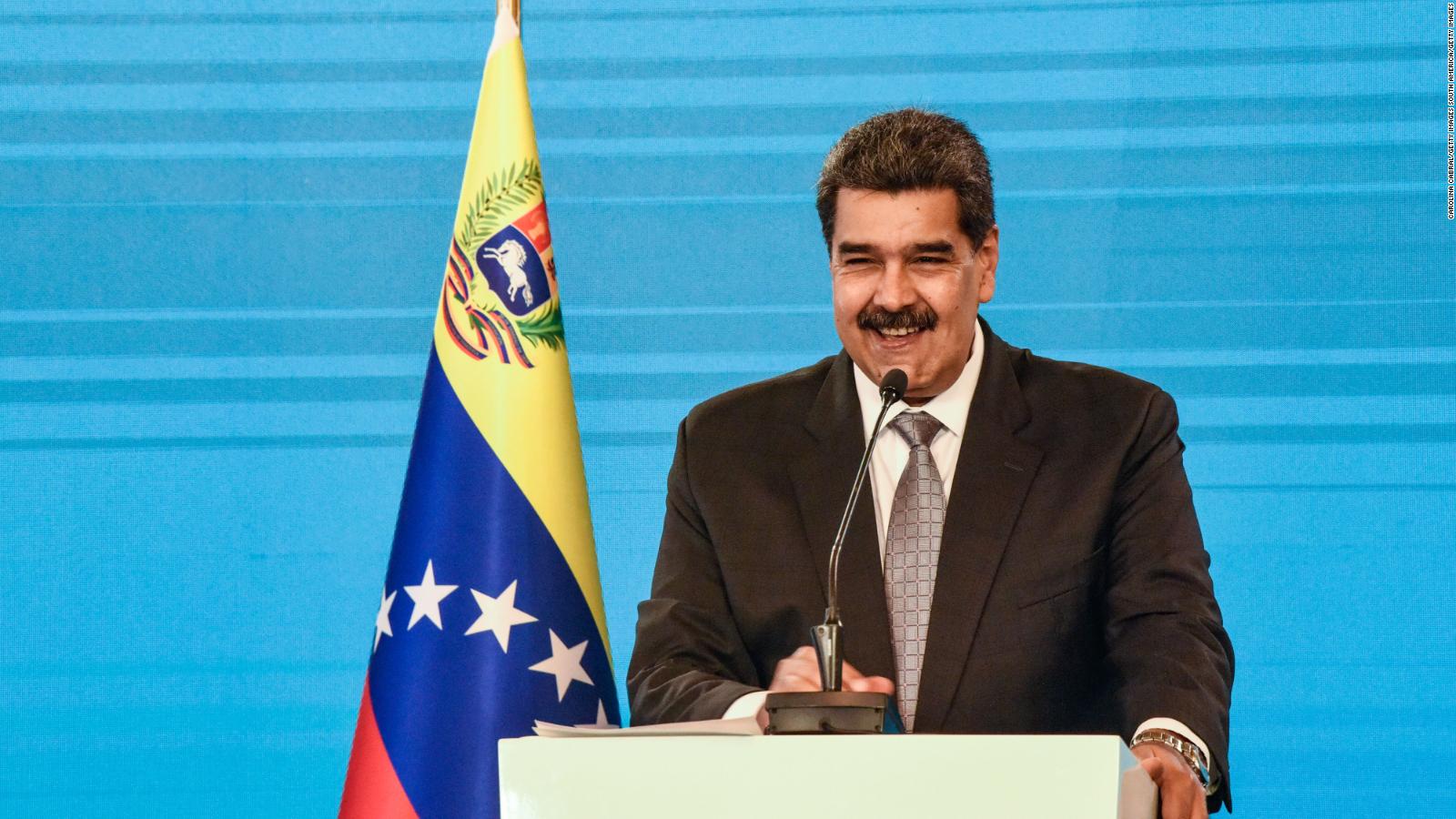(CNN) — Venezuela’s embattled President Nicolás Maduro joined a controversial debate on Wednesday over allegations of using artificial intelligence to obtain disinformation in Venezuela. The president criticized a note published in El Bois, Spain, which confirms that avatars posing as news anchors are spreading false and unconfirmed information about the South American country’s economic situation.
Maduro responded ironically and assured that it was a robot while imitating the mechanical movement of these creations. “They accuse us of being robots, which we’re not. No, it’s not artificial intelligence, it’s popular intelligence, it’s revolutionary intelligence.”
CNN was able to verify that there are no such television providers and that it is not a real news broadcast. On the Synthesia website, CNN identified Andy, Thomas and Emma as avatars serving any user who wants to create content.
These three avatars are the same avatars that appear in videos about Venezuela’s economic recovery and are published News HouseThe agency is said to have had a YouTube account since January 26 this year.
Attempts by CNN to contact the person responsible for the account have been unsuccessful. It is also not clear who is funding the campaign. Similarly, CNN contacted Cynthia to learn more about the work and whether its client was the Venezuelan government. No response was forthcoming.
CNN asked the Venezuelan government if it had anything to do with the videos, but they have not yet responded.
The story of these variations, which talk about Venezuela’s economic recovery without citing statistics, went viral this week and highlighted the concerns of journalists and experts about the use of artificial intelligence to spread propaganda and disinformation in a country with a very weak system. Independent media.
For example, videos with avatars create more confusion, explained the NGO Cazadores de Fake News. “First, a false source is created, called the “House of News,” which is not a news broadcast but pretends to be one, and a false anchor is created to give credibility. Those are common practices for disinformation,” said its director Adrian Gonzalez. said.
For his part, the coordinator of the C-informa coalition, Andrés Cañizales, assured in an interview with CNN that the creation of these videos is “not too expensive or too difficult or too slow”. It’s now a tool accessible not just to governments, but to anyone else trying to spread disinformation, he said.
Editorial Director factchecked.com, Tamoa Calzadilla confirmed that what is being seen is a progression of disinformation techniques and is nothing but a deep hoax. Calzadilla described it as “using digital techniques such as artificial intelligence to create moving images with audio and characters that are not real, but are shown to confuse and deceive the public.”
According to Víctor Amaya, director of Tal cual and the newspaper Espaja.com, this type of campaign “makes a lot of noise in public discourse in Venezuela.” “If one can’t trust anything that happens on the networks, they won’t trust everyone. In the most integrated media, the absent, the new”.
The story of the avatars Andy, Thomas and Enma tells the story of Venezuela’s economic recovery. This belief contradicts Ecoanalytica reports. In January this year, according to the company, there was a 17.5% drop in the sales volume index compared to the same month in 2022.


:quality(85)/cloudfront-us-east-1.images.arcpublishing.com/infobae/VWWQ37HV5ZERLPFWQKUG6JD2CQ.jpg)
:quality(85)/cloudfront-us-east-1.images.arcpublishing.com/infobae/DVLWJKBJAVKNNQUXRVYQP4UHUY.jpg)
:quality(85)/cloudfront-us-east-1.images.arcpublishing.com/infobae/FVNTXGAGFIT3KQWJH5HYR4JCOY.jpg)
